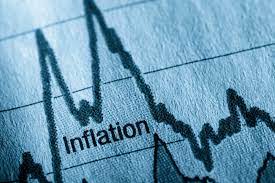Inflation has emerged as a major concern for the past few months. CPI inflation for March, which was released on Tuesday, was at an altitude of 17 months 6.95%. The Reserve Bank of India has also supervised inflation: The statement of monetary policy, released last week, signaled the focus change from reviving growth to underestimate inflation. Although it has maintained a policy level unchanged for now, it shows the possibility of an increase at the future repo level.
“In the order of priority, we have now put inflation before growth. The right time to prioritize inflation ahead of growth,” said the Governor of RBI Shaktikanta Das after launching a review of bi-monthly policy.
Impact on households
High inflation has been driven by rising fuel prices and food such as cereals and vegetables. The increase in fuel prices and food not only directly affected the family’s household budget that slowly came out of the covid shadows, but also threatened to put them under further pressure because of an increase in interest rates in the economy.
Increasing interest rates, as shown by the RBI and in line with the global trend of the central bank, will have a big impact on the large part of the people who pay emis on a home loan.
While the increase in interest rates in India was not expected to be very sharp compared to what had been planned by the Federal Reserve in the US, it would have bearings on existing loan customers.
If the taris will rise 100 basis points from 7.5% to 8.5% over the next one year, EMI in the subject of RS 50 Lakh for 15 years will rise from Rs 46,350 to RS 49,236 – Leapatan Rs 2,886 a month – If the term of office constant. If interest rates rose to 9% – an increase in 150-base points – Emi will rise to RS 50,713, an increase of 4,362 per month.
Impact on investors
The low interest rate environment also has an impact on conservative debt investors who are more comfortable investing in fixed deposits and other safe assets. When low tariffs, most deposits have resulted in an interest rate between 4.5-6% for investors depending on terms of office; However, as a result of high inflation, real income has been negative. For those who are in the highest tax bracket, it is even unreasonable to invest in remain deposits because post-tax will last between 3.1-4.1%, which is significantly lower than the inflation rate of 7%.
If a fixed deposit or small savings instrument produces 6% when inflation is 7%, then it is based on net, real interest income (nominal interest rate minus inflation). Most small savings schemes also, now produce negative real interest rates; Only PPF (7.1%) and Sukanya Samriddhi Yojana (7.6%) generate higher interest income than the current inflation rate.
Even the Employee Supervisory Center for Employee Supervisory Supervisory (EPFO) recently recommended an interest rate increase from 8.5% to 8.10% for more than 6 active crore customers for 2021-22. The 8.1% post-tax letter is the lowest interest rate in the EPF in at least four decades, but still higher than the tariff offered in small-saving schemes or other debt instruments including bank deposits.











More Stories
Protecting Wealth in Uncertain Times: Defensive Diversification Approaches
Fake news sites outnumber US newspaper sites: Report
This is how US Fed rate cuts will impact Indian economy